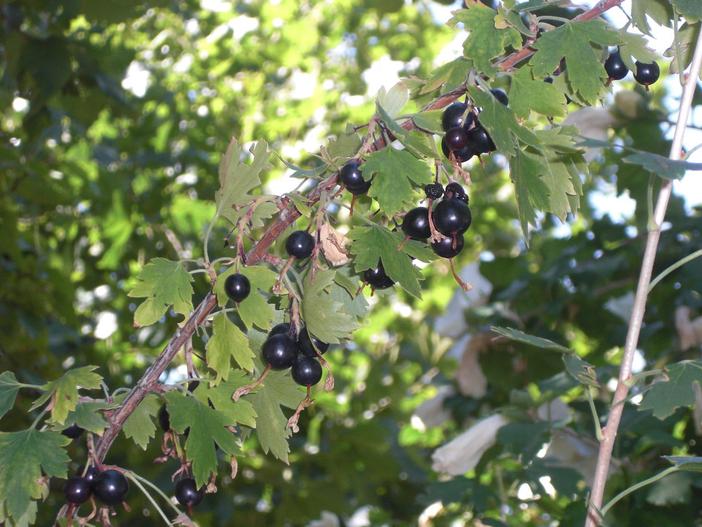Hairy Golden Currant
(Ribes aureum var. villosum)
Hairy Golden Currant (Ribes aureum var. villosum)
/
/

Andrey Zharkikh
CC BY 2.0
Image By:
Andrey Zharkikh
Recorded By:
Copyright:
CC BY 2.0
Copyright Notice:
Photo by: Andrey Zharkikh | License Type: CC BY 2.0 | License URL: https://creativecommons.org/licenses/by/2.0/ | Uploader: AndreyZharkikh | Publisher: Flickr




Estimated Native Range
Summary
Ribes aureum var. villosum, commonly known as the hairy golden currant, is a deciduous shrub native to the chaparral, scrublands, and open woodlands of western and central North America. It typically grows up to 6.5 feet (2 meters) tall and wide, with a rounded and spreading form. The hairy golden currant produces clusters of bright yellow, tubular flowers in the spring, which are quite showy and attract pollinators. These flowers give way to edible black berries that are favored by birds and can be used in jams and jellies. The plant’s leaves turn a vibrant yellow in the fall, adding seasonal interest to the landscape.
The hairy golden currant is valued for its drought tolerance once established, making it an excellent choice for water-wise gardens and native plant landscapes. It is also used for erosion control and as a wildlife attractant, providing food and habitat for various bird species. This shrub thrives in full sun to partial shade and adapts to a range of soil types, though it prefers well-drained soils. While generally low-maintenance, it can be susceptible to powdery mildew and rust, especially when grown in humid conditions or with poor air circulation. Pruning after fruiting will help maintain its shape and promote vigorous growth.CC BY-SA 4.0
The hairy golden currant is valued for its drought tolerance once established, making it an excellent choice for water-wise gardens and native plant landscapes. It is also used for erosion control and as a wildlife attractant, providing food and habitat for various bird species. This shrub thrives in full sun to partial shade and adapts to a range of soil types, though it prefers well-drained soils. While generally low-maintenance, it can be susceptible to powdery mildew and rust, especially when grown in humid conditions or with poor air circulation. Pruning after fruiting will help maintain its shape and promote vigorous growth.CC BY-SA 4.0
Plant Description
- Plant Type: Shrubs
- Height: 3-6 feet
- Width: 3-6 feet
- Growth Rate: Moderate
- Flower Color: Yellow
- Flowering Season: Spring, Summer
- Leaf Retention: Deciduous
Growth Requirements
- Sun: Part Shade
- Water: Medium
- Drainage: Fast, Medium, Slow
Common Uses
Bird Garden, Butterfly Garden, Deer Resistant, Drought Tolerant, Edible*Disclaimer: Easyscape's listed plant edibility is for informational use. Always verify the safety and proper identification of any plant before consumption., Fragrant, Low Maintenance, Street Planting
Natural Habitat
Native to chaparral, scrublands, and open woodlands of western North America
Other Names
Common Names: Crandall Currant , Clove Currant , Golden Currant , Missouri Currant
Scientific Names: Ribes aureum var. villosum , Chrysobotrya odorata , Chrysobotrya revoluta , Coreosma longifolia , Coreosma odorata , Ribes aureum , Ribes fragrans , Ribes odoratum , Ribes palmatum , Ribes palmatum
GBIF Accepted Name: